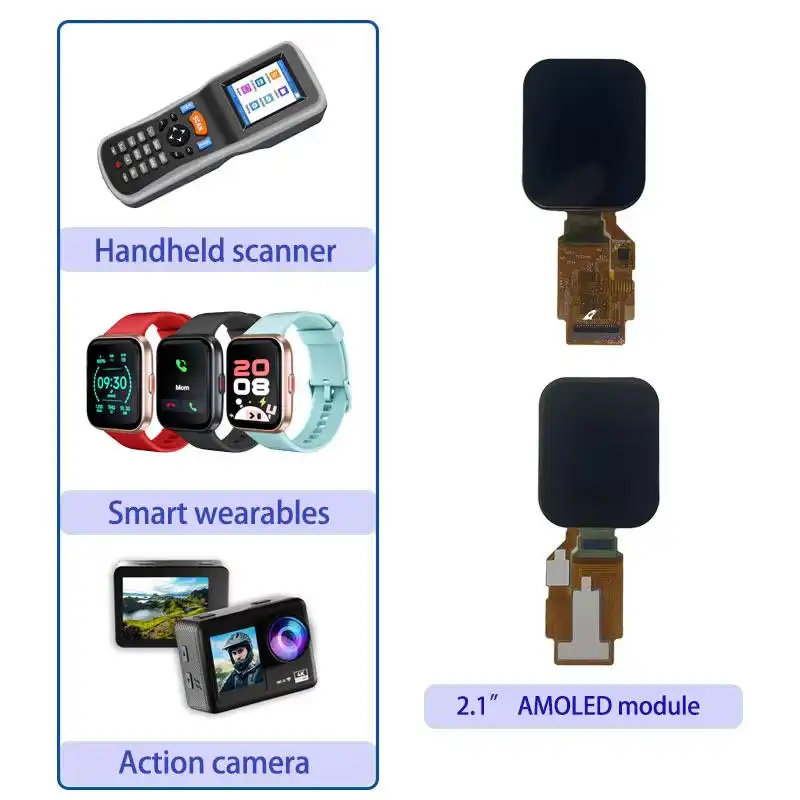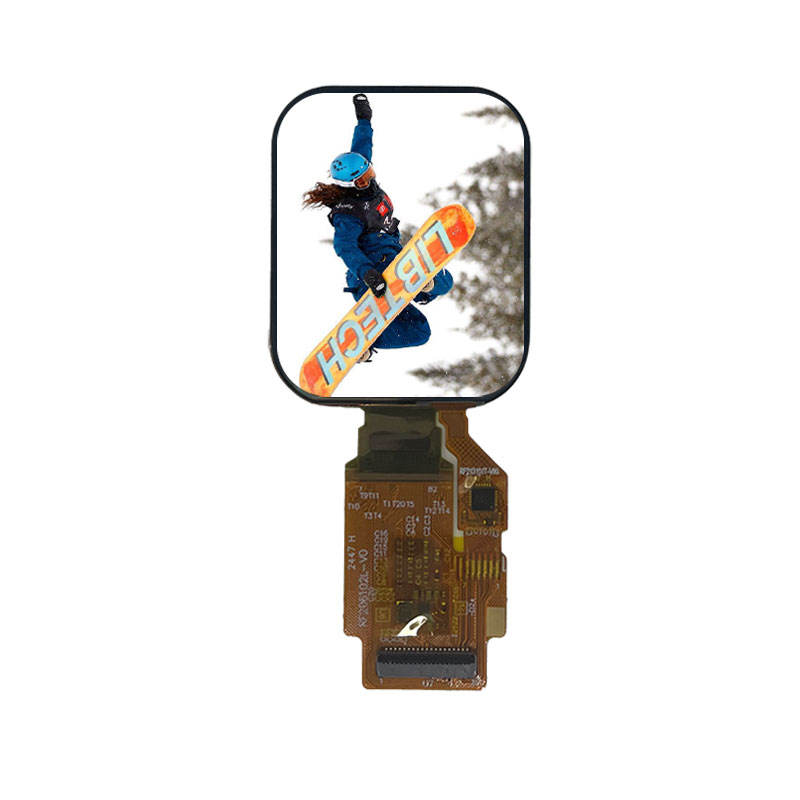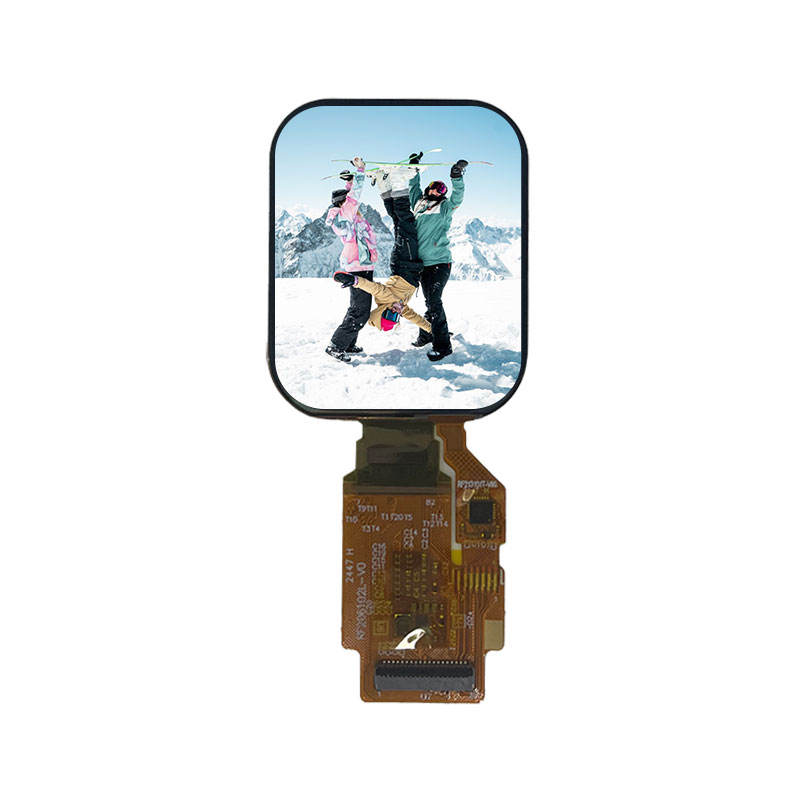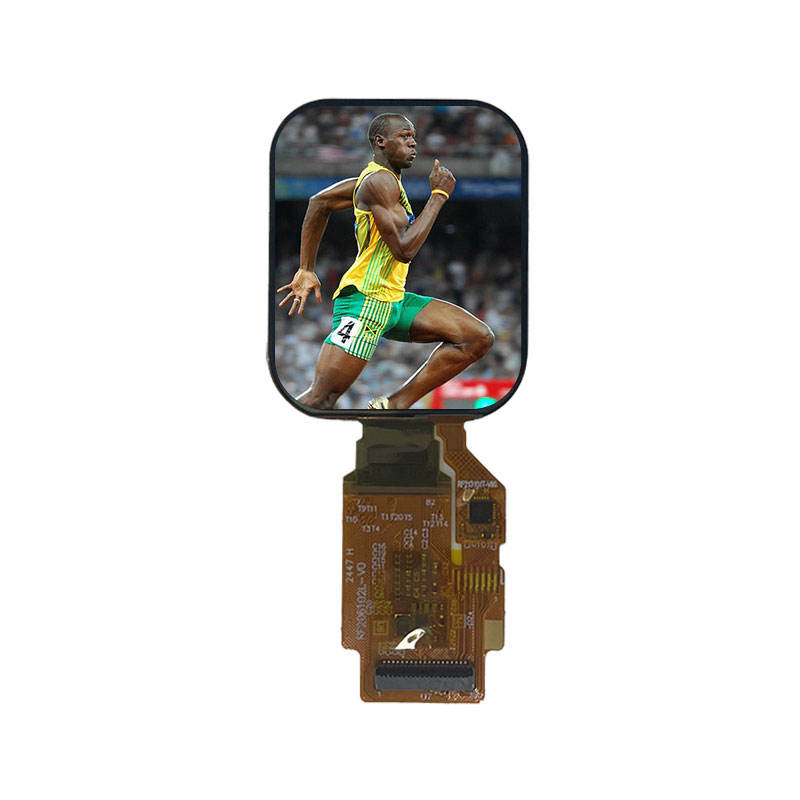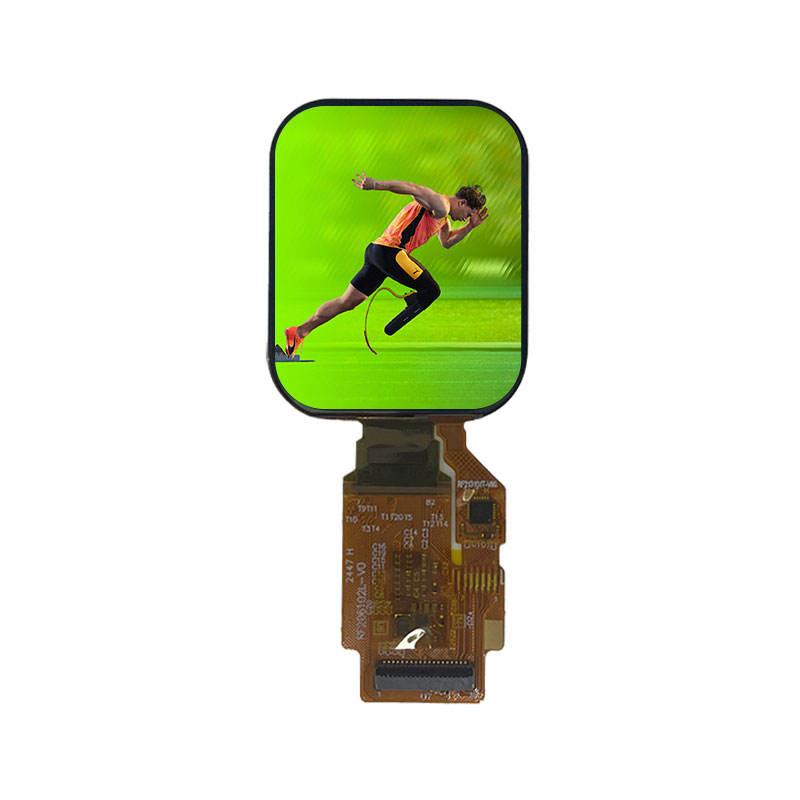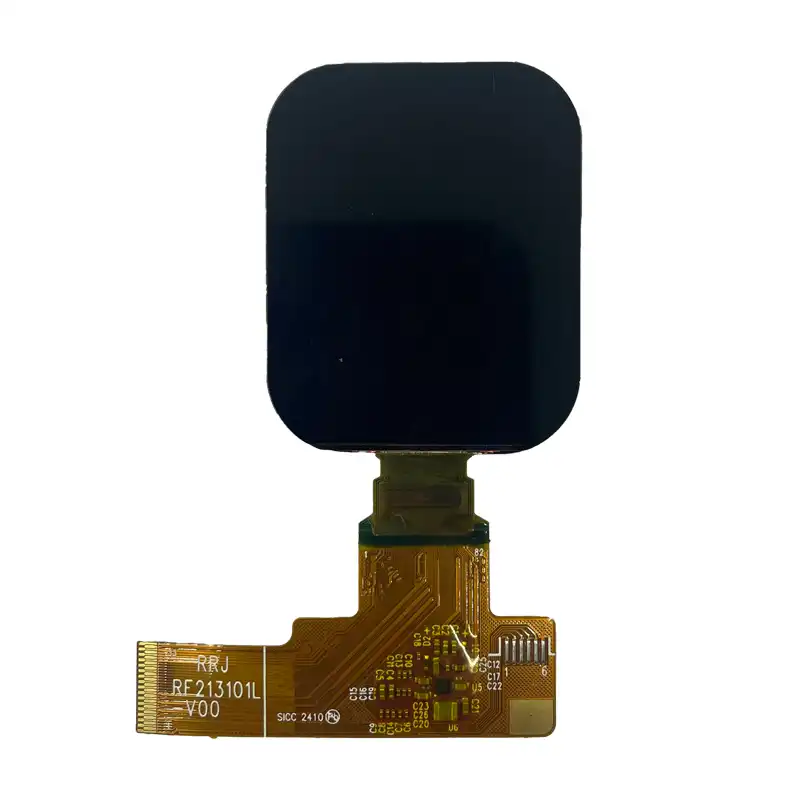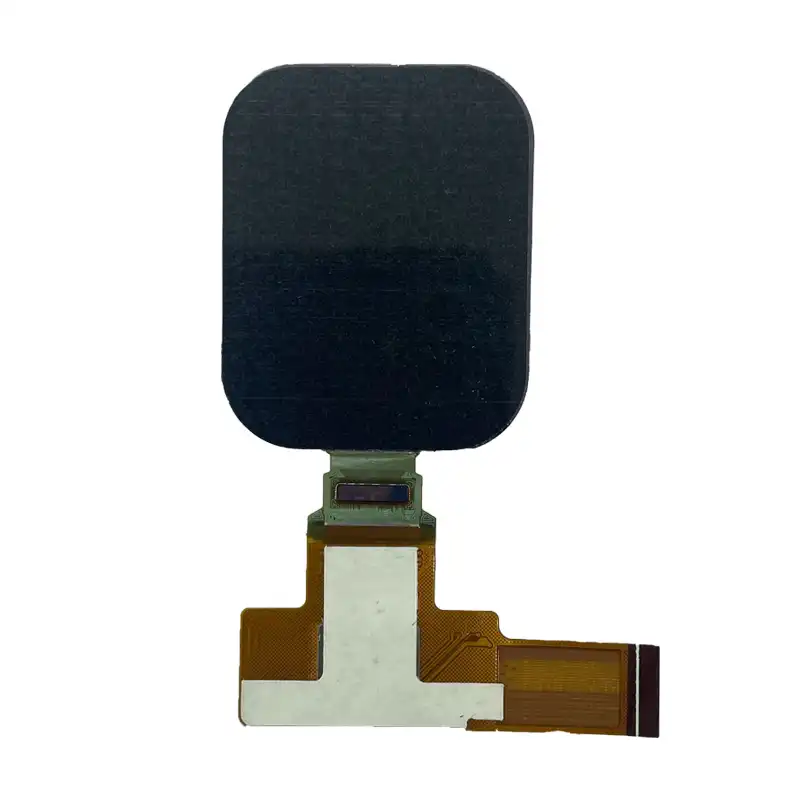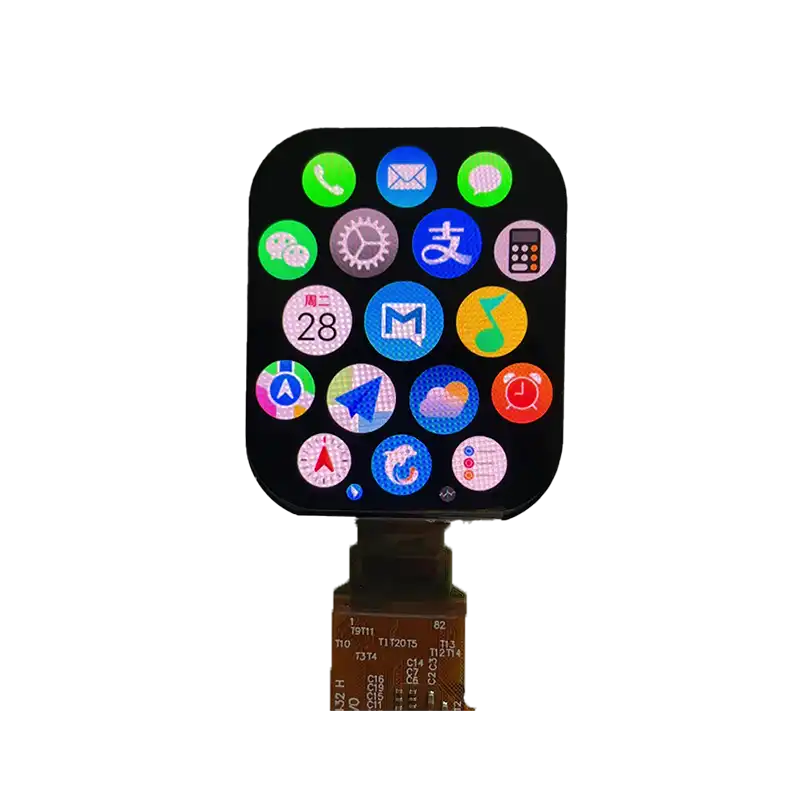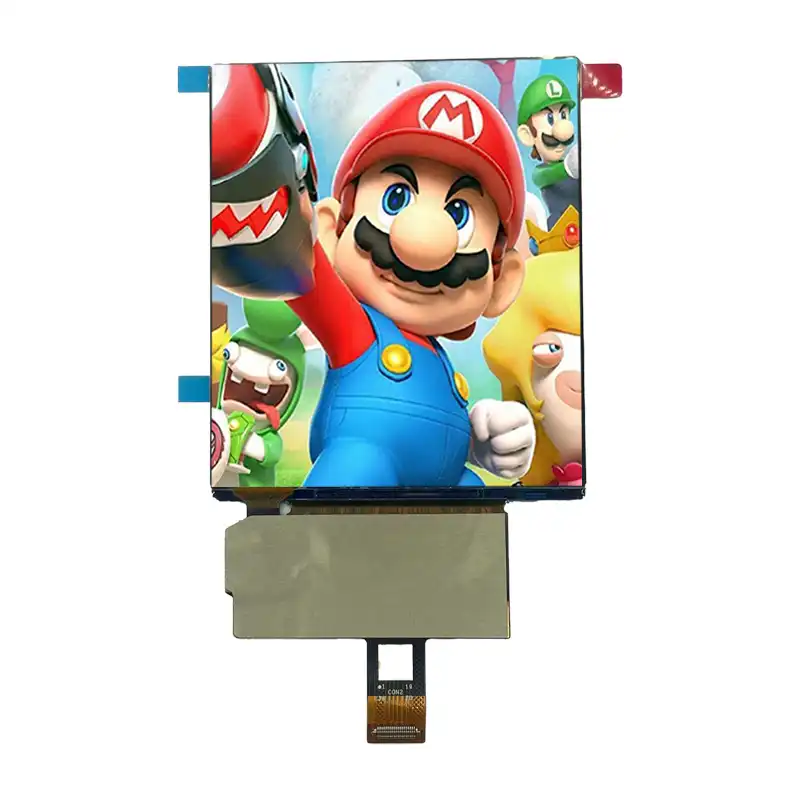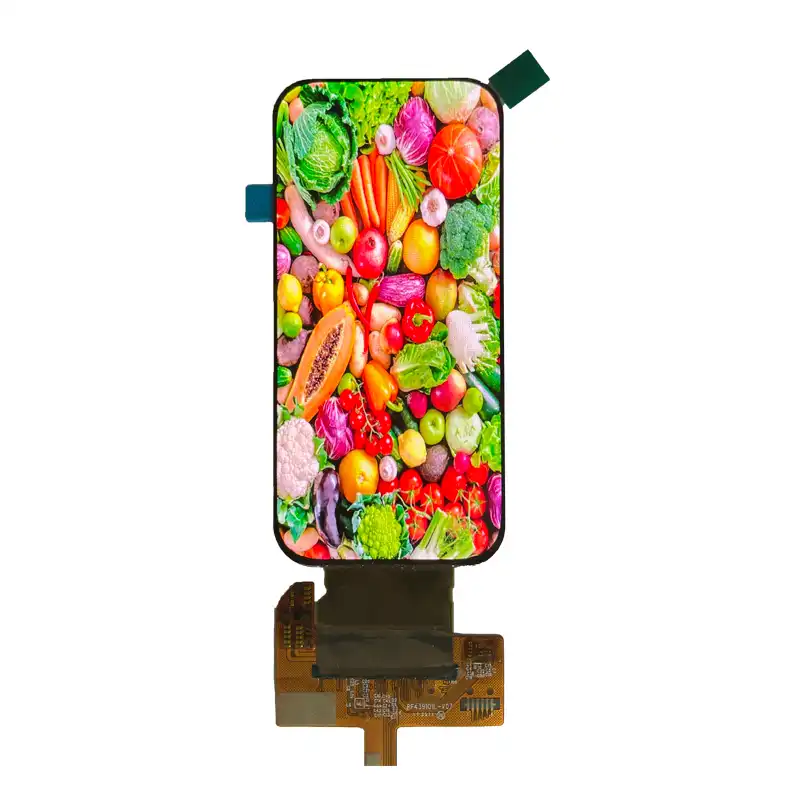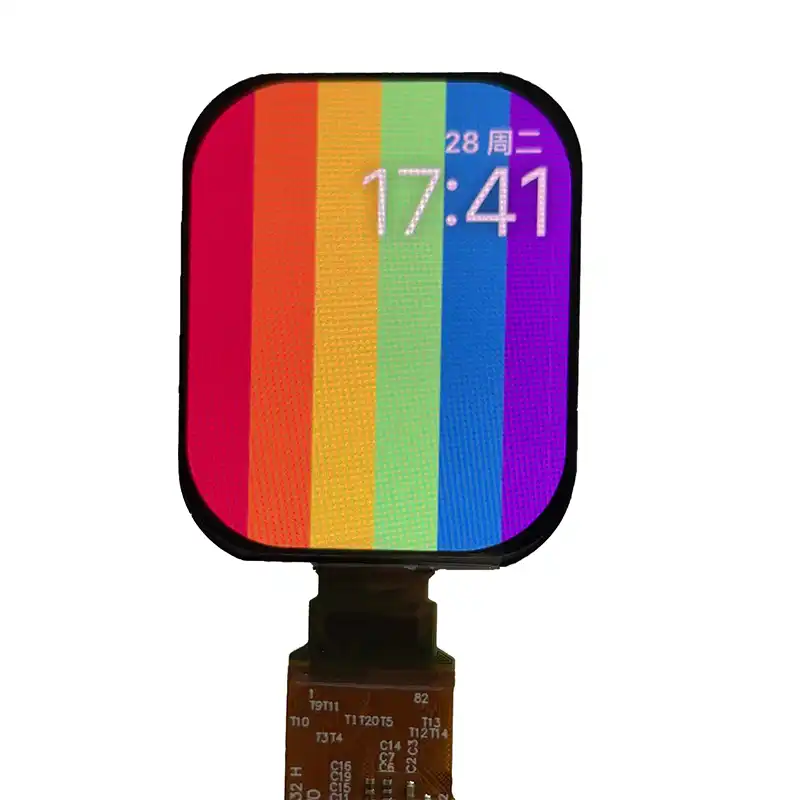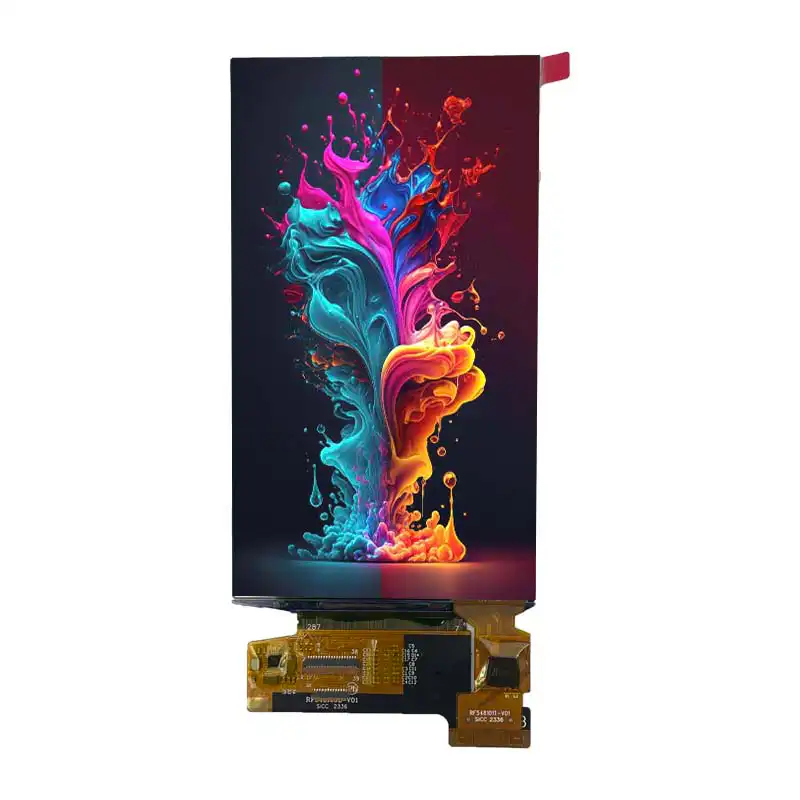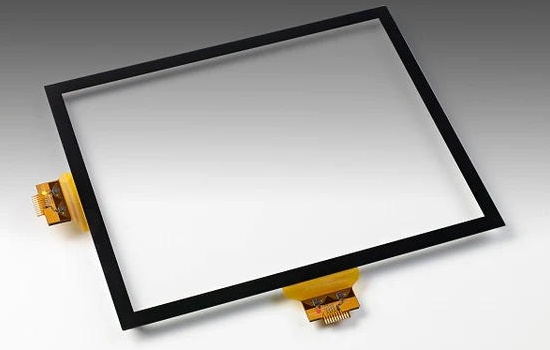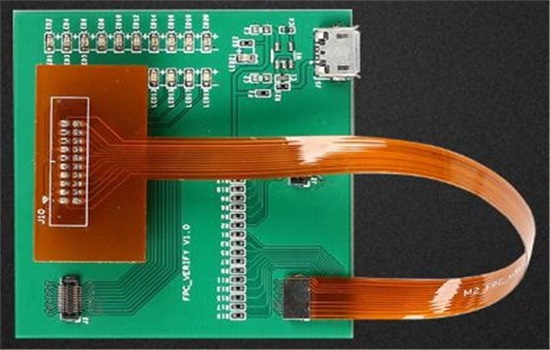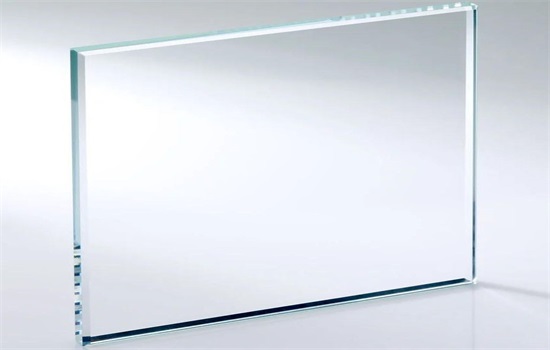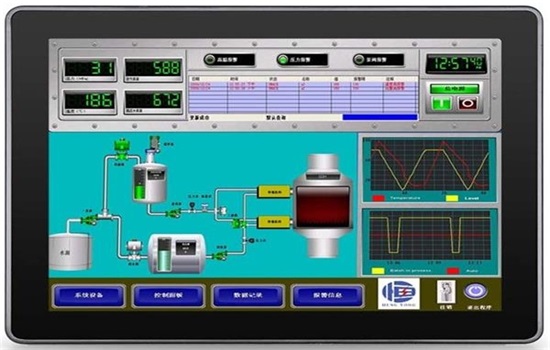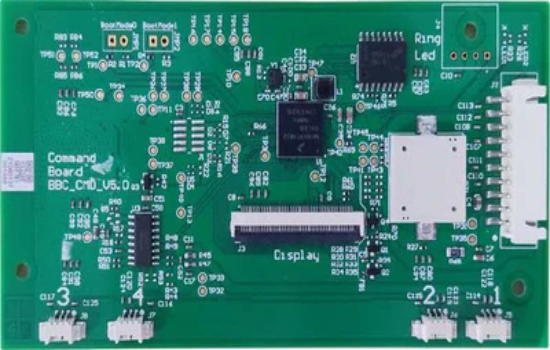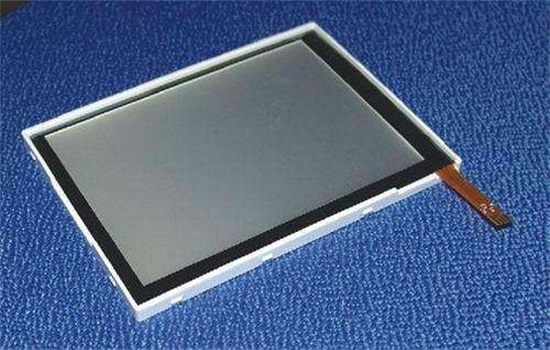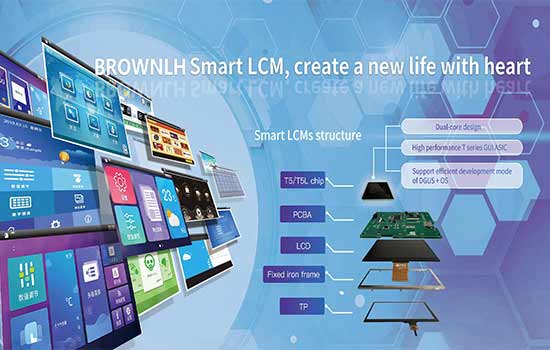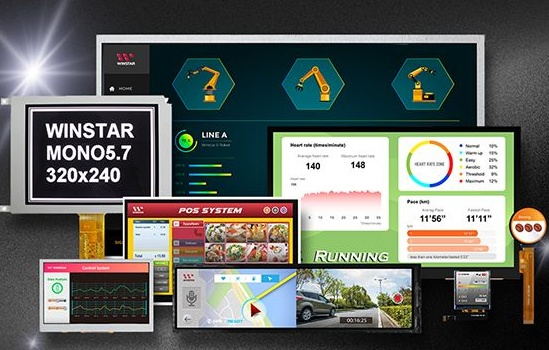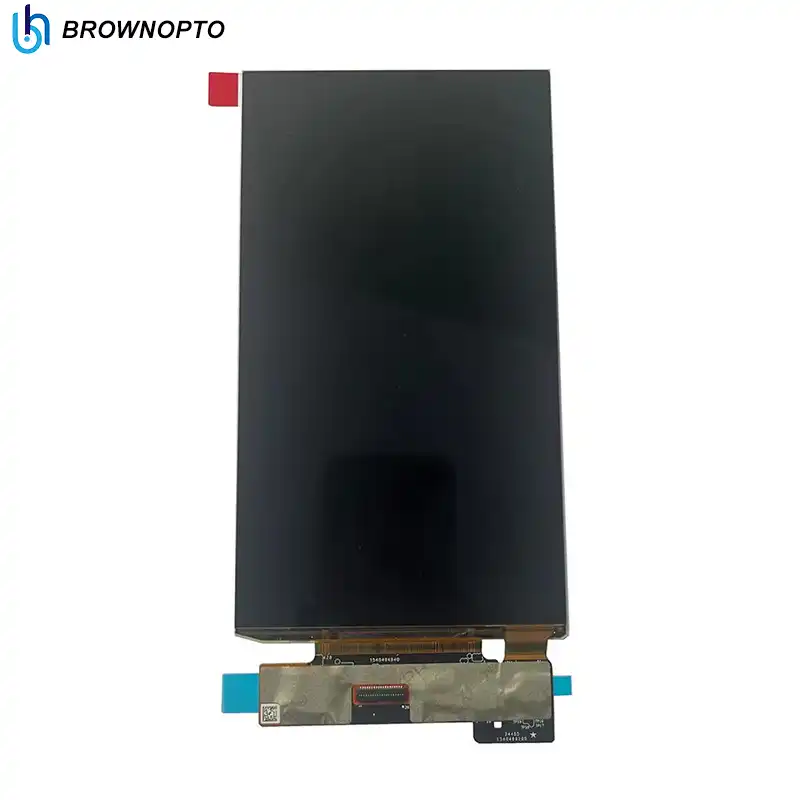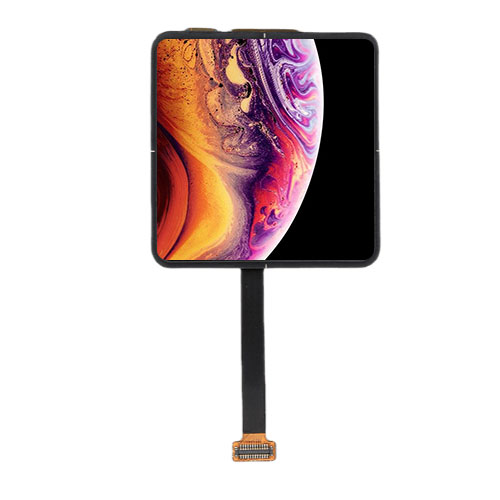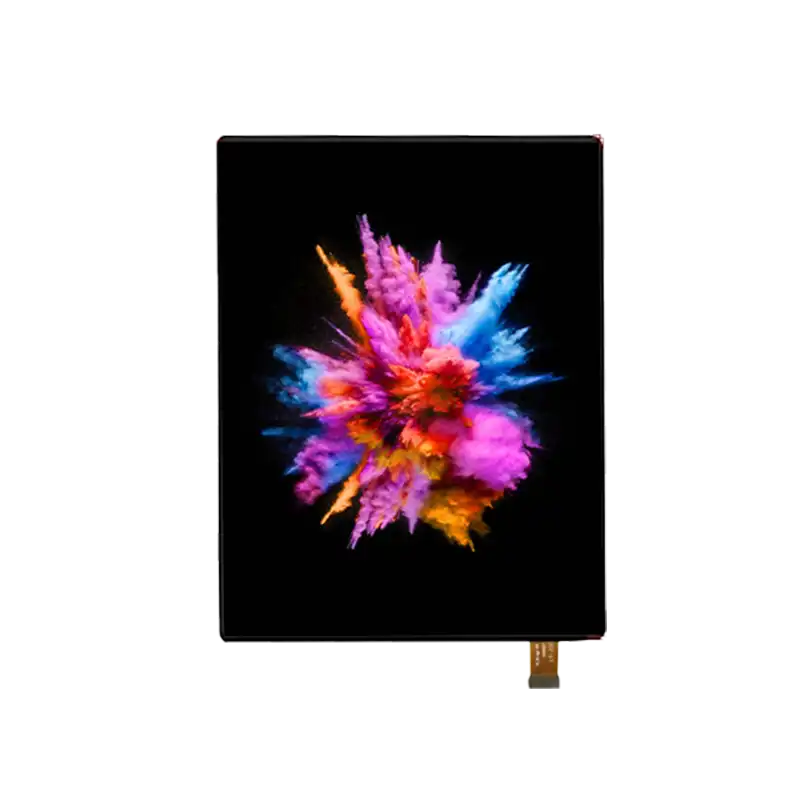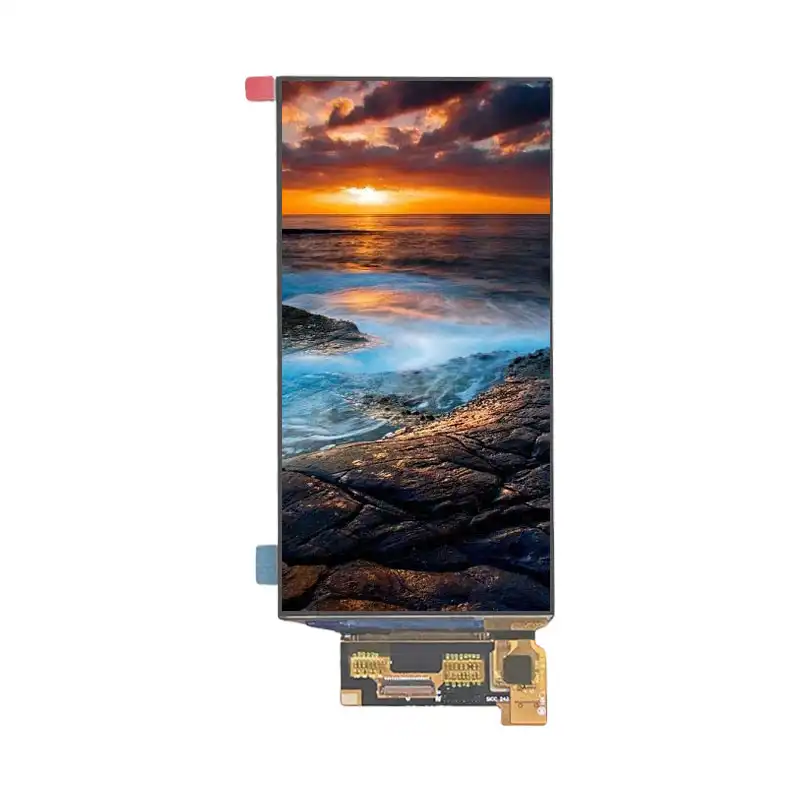The2.1 inch OLED display module is a compact, high-resolution solution designed for integration into modern portable electronics. With its AMOLED technology, this display offers superior image quality, wide viewing angles, and low power consumption — making it ideal for applications such as handheld scanners, action cameras, smart wearables, and more.
Why Choose This 2.1 Inch OLED Module?
BuOLED ekranperformans ve verimliliğin birleşimiyle öne çıkıyor:
410 x 502 piksel yüksek çözünürlük
Gerçek siyah seviyelerine ve yüksek kontrasta (60.000:1) sahip AMOLED panel
Mükemmel parlaklık (600 nite kadar)
Ultra ince tasarım (sadece 0,8 mm kalınlığında)
Düşük bekleme gücü tüketimi (<1 mW)
Bu özellikler, 2.1 inç OLED ekranı, görsel netliğin ve enerji verimliliğinin önemli olduğu pille çalışan sistemler için uygun hale getiriyor.
Modül Genel Bakışı
| Özellik | Detaylar | Birim |
|---|---|---|
| Ekran Boyutu (Çapraz) | 2.06 | inç |
| Görüntüleme Modu | AMOLED | - |
| Çözünürlük | 410 x 502 | - |
| Optimum Görüntüleme Yönü | Her Yöne | En İyi Görüntü Kalitesi |
| Modül Anahattı | 34,787(Y) × 43,135(D) × 0,80(T) (Not 1) | mm |
| Aktif Alan | 33.087(Y) × 40.511(D) | mm |
| Ekran Renkleri | 16,7 milyon | - |
| Arayüz | MIPI/QSPI/4-Kablolu SPI | - |
| Sürücü IC | CO5300 | - |
| Çalışma Sıcaklık Aralığı | -20 ila 70 | °C |
| Depolama Sıcaklık Aralığı | -30 ila 80 | °C |
| Ömür boyu | 13 | Aylar |
| Ağırlık | Belirsiz | G |
Not 1: Kancalar, direkler, FPC/FPC kuyruğu vb. hariç.
2,1 İnç OLED Ekran Modülünün Temel Uygulamaları
1. Elde Taşınabilir Tarayıcı Cihazları
Lojistik, envanter yönetimi ve satış noktası (POS) sistemlerinde kullanılan el tipi tarayıcılar,2,1 inç OLED ekranÇeşitli ışık koşullarında yüksek görünürlüğü, taranan verilerin açık havada veya aydınlık depolarda bile her zaman net bir şekilde okunabilir olmasını sağlar.
Modülündüşük güç tüketimiAyrıca, vardiyaları boyunca kesintisiz taramaya güvenen mobil çalışanlar için önemli olan cihaz çalışma süresini de uzatır.
2. Aksiyon Kameraları ve Giyilebilir Teknoloji
Vücut kameraları, araç kameraları ve aksiyon kameraları gibi giyilebilir elektronik cihazlarda,OLED modülüKüçük bir alanda keskin görseller sunar. Hızlı yenileme hızı ve MIPI, QSPI ve 4 kablolu SPI gibi duyarlı arayüz seçenekleri sayesinde minimum gecikmeyle gerçek zamanlı önizleme ve oynatmayı destekler.
Onunhafif ve ince profilGörüntü kalitesinden ödün vermeden kompakt kamera tasarımlarına kolayca entegre edilmesini sağlar.
3. Akıllı Giyilebilir Cihazlar ve IoT Cihazları
Akıllı saatler, fitness takip cihazları ve sağlık izleme cihazları genellikle hem enerji açısından verimli hem de görsel olarak çekici ekranlar gerektirir.2.1 inch OLED display modulebu kullanım durumlarına mükemmel şekilde uyuyor.
16,7 milyon renk desteği ve geniş görüntüleme açısıyla canlı ve doğru renk üretimi sağlar.düşük bekleme gücü kullanımıGiyilebilir teknoloji kullanıcıları için kritik öneme sahip olan pil ömrünün uzamasına yardımcı olur.
4. Endüstriyel ve Tıbbi Aletler
Endüstriyel kontrol panelleri, test ekipmanları ve taşınabilir tıbbi teşhisler, bu sistemin netliğinden ve duyarlılığından faydalanabilir.OLED ekranModülün -20°C ile +70°C arasındaki çalışma sıcaklığı aralığı, çeşitli ortamlarda güvenilir performans sağlar.
Ek olarak,TE (yırtılma etkisi) pimiEkran ve mikrodenetleyici birimleri (MCU'lar) arasında kusursuz senkronizasyon sağlayarak ekran yırtılmasını azaltır ve gerçek zamanlı izleme uygulamalarında kullanıcı deneyimini iyileştirir.
Tasarım Esnekliği ve Entegrasyon
The2,1 inç OLED ekrandahil olmak üzere birden fazla arayüz türünü desteklerMIPI, QSPI ve 4 kablolu SPIFarklı sistem mimarileri için esneklik sunar. Mühendisler, ister Raspberry Pi tabanlı bir cihaz, ister gömülü bir ARM sistemi veya özel bir MCU tabanlı kontrolör olsun, donanım platformlarına göre en uygun iletişim protokolünü seçebilirler.
Ultra ince form faktörü ve yüzeye monte FPC konektörü, özellikle alan kısıtlaması olan uygulamalarda PCB entegrasyonunu ve mekanik tasarımı basitleştirir.
Çevresel Dayanıklılık ve Güvenilirlik
Uzun süreli kullanım için tasarlanan buOLED modülüStandart çalışma koşullarında tipik ömrü 13 aydır. Geniş bir sıcaklık aralığında (-20°C ila +70°C) güvenilir bir şekilde çalışır ve -30°C ila +80°C arasında güvenle saklanabilir, bu da onu hem iç hem de dış mekan uygulamaları için uygun hale getirir.
Modül, üretim partileri arasında tutarlı performansı garantilemek için sıkı optik ve çevresel testlerden geçirilir.
